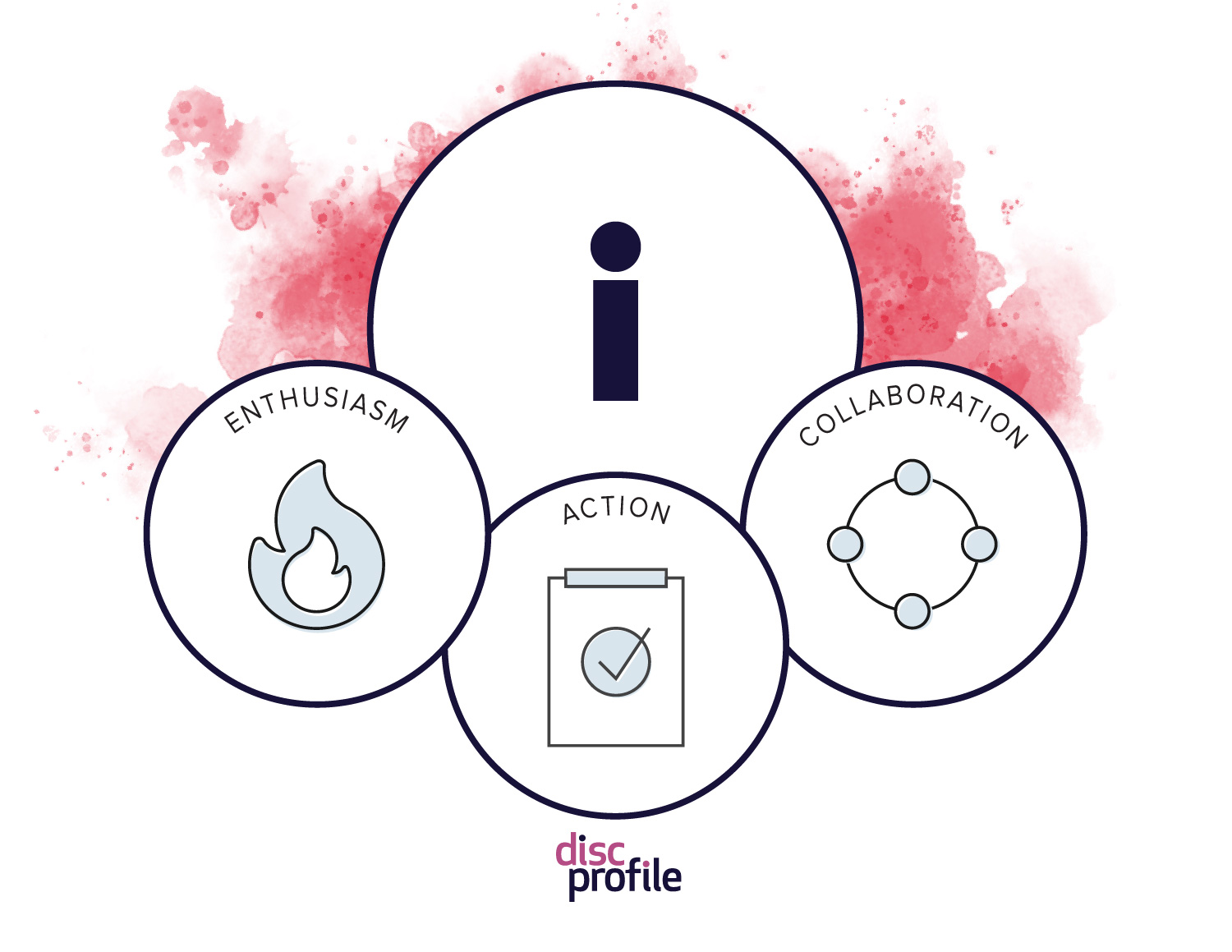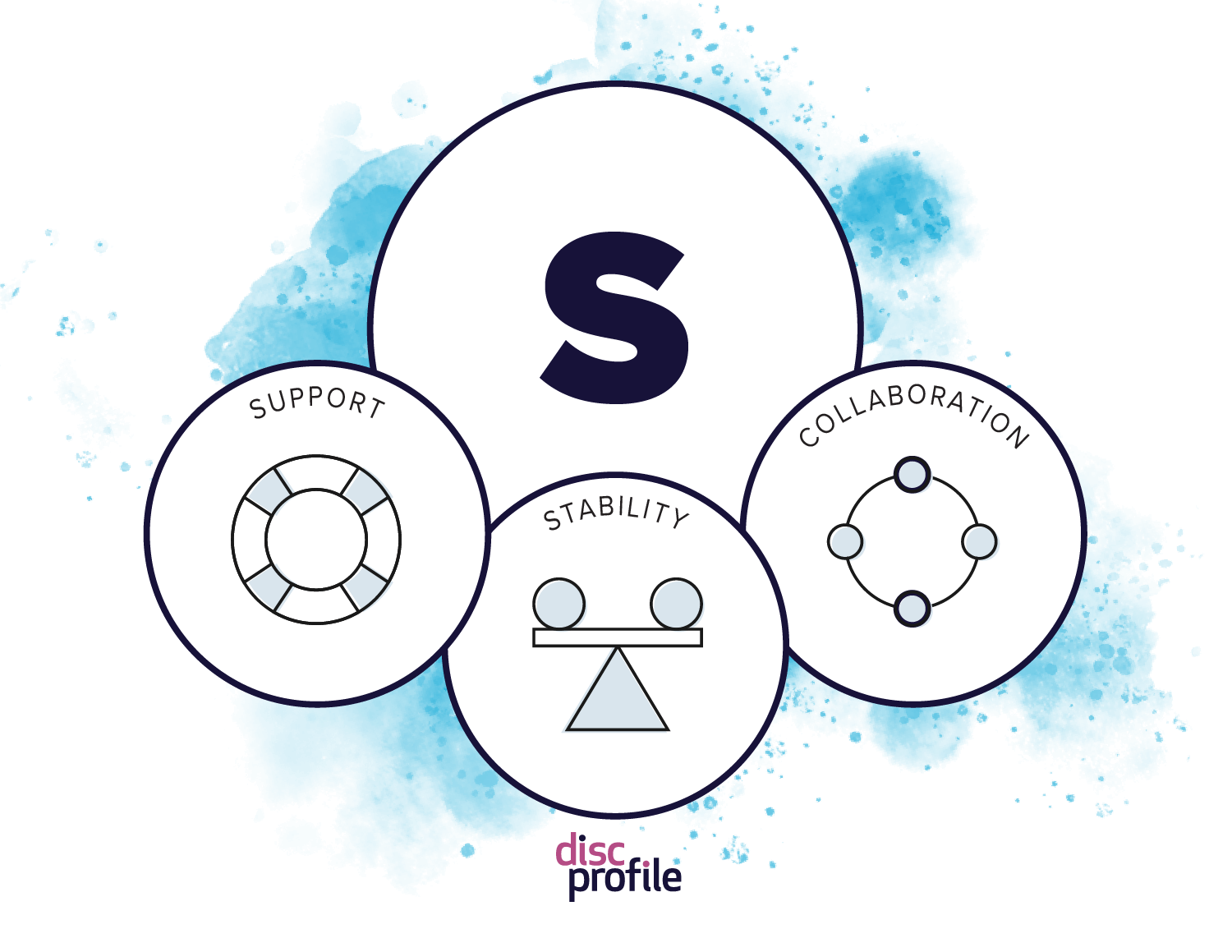Managing Remote Teams

Key Takeaways
- Managers can make the transition to remote work easier by setting the tone and creating opportunities for employees to stay engaged. This engagement will be different than it was in the traditional office environment, but it can be equally rewarding and fun!
- Managers can check in, set clear expectations, model productive behaviors, and establish the importance of work/life balance to keep their teams from getting overwhelmed.
- Each of the DiSC® styles has strengths that lend themselves to managing remote teams, along with workplace tendencies that might make the task more challenging.
Five years ago, when many businesses switched to remote work to help slow the spread of COVID-19, countless managers were faced with not only recalibrating their own work reality, but also guiding their employees through this great change as well.
“Trust and accountability is key,” says Dana Montgomery, an operations leader who already had experience managing remote teams when the pandemic started. “You have to be someone people believe in and feel they can come to, and you have to model the behavior you want to see.”
While many teams have adapted to remote work by now, it's still normal for teams to transition from an in-office model into a fully remote work model. This happens because of a number of factors:
- Companies might decide to close down one or more of their offices.
- A survey might reveal that most members of a team prefer the flexibility of remote work, so they switch the team to a remote model.
- Members of a team might relocate.
- Teams might transition to a remote model for a couple of months out of the year to accommodate travel schedules.
We talked to Montgomery in 2020 about managing remote teams in general, and more specifically what she recommends to managers who are suddenly put in this position, like many were during the COVID-19 pandemic. Here are some of her tips:
Getting started: Managing virtual teams
Acknowledge that this is challenging
During the pandemic, many employees working from home were—at the same time—taking care of children whose schools have closed, supporting suddenly unemployed partners, worrying about their aging relatives, and so much more. The shift to remote work was one of many huge changes for most people, and we need to acknowledge that.
It's still important to note that amid remote work, employees are dealing with other pressing issues in their lives, and it might be harder to simply “push those aside” when they're working from their homes.
Montgomery says, “Employees knowing the organization empathizes and understands the complexity of their reality is hugely important to instilling confidence and easing fears in the longer term.”
When managing remote teams, leading with vulnerability and taking time to truly ask how your people are doing could make them much more comfortable. For employees who are new to remote work, doing this can help alleviate the stress that comes with the new arrangement. It can help managers gain insights into how they can help their employees through the transition.
Assume good intentions
“This is so important,” says Montgomery, “that it’s one of our team expectations.” She says so much gets lost when you aren’t talking face-to-face. “I’m not saying people shouldn’t be held accountable for less than stellar behavior,” she says, “but it’s so easy to read into an email, or assign a tone that isn’t really there. Dig deeper, ask people to explain what they meant by x, y, or z. This is especially important now when so many are feeling overwhelmed and out of sorts.”
Limit the number of platforms you’re using
Montgomery says, “I would suggest picking one or two virtual communication tools to conduct day-to-day business, set expectations around how they should be utilized, and train people on how to use them effectively. Don’t just share a new platform and expect everyone to start utilizing it.”
When considering which tools to use, think about your team and what will work for them. For many, home Wi-Fi bandwidth is a challenge. If stipends are not available for employees to build up their in-house capacity and you want to do videoconferencing, make sure you choose a platform that people can also join by phone. Managing a remote team involves building a technological infrastructure that includes everyone.
Check in more often
Things are changing rapidly in our world right now, and that’s likely true for your workplace as well. At least once a week, have a staff check-in. Give yourself plenty of time to prepare for this meeting, so you can make sure you have collected all the information your employees need to know and have figured out the best way to communicate it clearly and concisely. Be sure to leave a lot of time for staff to ask questions.
Create clear expectations
If you lay down the team ground rules, Montgomery says, “people will become more confident and able to deliver in this new environment. It will also better allow the manager to understand who is on task and who is struggling.”
Start by communicating your expectations around responding to email and keeping calendars updated. In a remote setting, these things are critical to a well-functioning team.
Montgomery recommends being specific about email response times. For example, “respond within 12 hours if it’s urgent, or 24–48 hours if not.” (Your response time expectations may be different, especially if you supervise part-time employees.) “I can’t pop by my colleague’s office to see if she received my email,” Montgomery says, “and I can’t ask her while we’re both heating up lunch.” If you don’t hear back for several days about an email you sent, you don’t know whether a response is coming, or if it slipped through the cracks.
Everyone should keep their calendars updated, including when they will be out of reach or on calls. Ask your team to decline or accept every meeting invitation they receive. Having to go through lots of back and forth to find a meeting time because people haven’t clearly marked their availability on their calendars is a waste of everyone’s time.
Encourage people to block off time for a lunch break. Also, some employees perform well when responding to emails as they come in, but others may prefer blocking off a time each day, say early mornings or late afternoons, where they are just focused on email and thus unavailable for meetings or other interruptions. “Allowing people space to claim their time is important,” says Montgomery.
Model the behavior you want to see
If you set email and calendar rules for your staff, be sure to follow those rules yourself. When you are communicating expectations to your team, “it’s critical to make clear that this is not about being ‘big brother,’” says Montgomery. It’s about encouraging work-life balance and supporting your colleagues by not contacting them when they are off the clock. “I don’t want to call one of my direct reports when they are with their kid at a doctor’s appointment. I also don’t want one of my team members to try to set up time with me because my calendar looks free, but I’m actually out of the office.”
Speaking of work-life balance, managers should give some thought to the image they are projecting to their employees. If you tell your team they should be clocking out by 6 p.m. but they get emails from you sent at all hours of the night, they may wonder if you actually want them working around the clock as well. It’s a reality of our work world that people often work more than 40 hours a week, and your job may require that of you and/or your team. Just be thoughtful about modeling sustainable work behavior. Even if you are writing emails until 11 p.m., could you save them as drafts and send them to your team first thing in the morning?
Do not deal with team conflict via email
“Beware the pitfalls of relying too much on email in the absence of face-to-face,” says Montgomery. She advises never to deal with conflict over email. This is also true of more complex discussions. “If you are on email exchange number two or three with someone and details are getting lost, or if something is just too complicated to explain in writing, pick up the phone or schedule a meeting,” she says.
Think creatively about how to replace “watercooler” talk
In most offices, there’s quite a bit of casual conversation going on throughout the day as people pass through the space or congregate around the watercooler or coffee machine. In the absence of these informal interactions that help you know how your teammates are doing, you may have to build in some dedicated chat time. “Take the first five to ten minutes of a check-in to see how things are going,” suggests Montgomery. You may not have needed to do that when you were all in an office together, but it may be beneficial now.
Montgomery also suggests setting up casual chats, like virtual coffee breaks or happy hours, and encouraging your team to do that with one another. The “watercooler” type chats among Montgomery’s team often happen over text. “Some of this is about organizational culture,” she says, “but I text with my team a ton. I rarely did this in my prior office job.”
Don’t expect business as usual
For managers whose teams have moved to remote work with little time to prepare for the change, it’s important to extend kindness and grace to both yourself and your team. This is a new situation for all of us, and you will likely be setting yourself up for failure if you are aiming for “business as usual.”
This is an opportunity to build a culture of trust and compassion among your team. Remember: when managing remote teams, assume good intentions and acknowledge the challenges.
“Think creatively about how to keep team camaraderie,” Montgomery advises.
Remote relationships and DiSC®
Work today is about relationships. Relationships between manager and employees, between staff and customers, among teammates. DiSC can help us develop and maintain those relationships even when we seldom, or never, meet in person. Nevertheless, what we’ve learned about working with a colleague normally only a few feet away from us doesn’t necessarily translate once you can only interact via technology. Managers used to walking around to check on things can’t check in so easily or personally once team members work remotely.
It is possible to be a successful manager from a distance. And there are a lot of resources available to managers online to help them learn to get comfortable with new skills needed. It takes attention and practice.
Remote managers by DiSC style
Will people work if I’m not there? Will I lose touch with my employees if I’m not physically present? How will I know if my remote workers need additional support? Will we still get results? Will we lose the sense of family we have now?
As a manager, you have a responsibility to set remote staff up for success. Some of that work will be done by interacting with other teams. For example, you’ll need to think about how to work with IT to ensure that staff know how and where to access workplace resources. What’s the policy on communicating over Wi-Fi? How do they use your VPN? Where will they share documents? What platform is supported for videoconferencing? You’ll want to know what help is available to you and your team from HR. And you might need to ask Purchasing about who pays for a webcam. You can support your own staff through your relationships with other teams.
While you’re working out logistics and such, don’t forget what you already know (or can learn) from DiSC. We suggest reviewing Everything DiSC® Sales before negotiating with other teams and individuals who hold resources you need. We suggest reviewing Everything DiSC® Management when considering how you’ll work with your own team. And in preparation for the conflicts that will arise (and often should arise) among team members, take another look at Everything DiSC® Productive Conflict.

D-style managers
Strengths
- You’re probably excited by the challenge of working from home or managing remote workers.
- You’re driven toward results so you won’t struggle with getting down to your own work and holding team members accountable for theirs.
- Your confidence can reassure others on your team and other teams that you have things well in hand.
Challenges
- Losing a level of control over the work or your employees’ work.
- Having your directness and assertiveness come across as being rude or dismissive, especially if others can’t see your face or hear your voice.
- Leaving your work in another room and letting it stay there while you attend to your home life and other relationships.
Tips
- Schedule regular check-ins and keep to them. You don’t want to micromanage, nor do you want to abandon your staff. Use the check-ins for status updates and also to see how your staff is doing on a more personal level. Make sure your more reticent or quiet team members feel that they have been heard.
- Don’t forget about employee development. You might not be able to walk by and spot an issue you can help them with, but you can still discuss their goals and how they reach them.
- Find ways to show that you care about your staff, even if you aren’t around to listen to how their commute went. Find ways of celebrating accomplishments. Say “thank you” more often. Do something each week to help your team feel like a team.
- Remember to “go home” at the end of the day. If you’re sending emails or assigning tasks on Trello at 8 p.m., you’re going to set expectations that your entire team should always be on call. Staff should have regular hours and so should you.
- You probably hate conference calls and try to work on something else when they move too slowly. There are resources on making these calls and any meeting more productive and inclusive, so spend some time reviewing and practicing those tactics. Manage your own impatience.

i-style managers
Strengths
- Encouraging open dialogue, even in virtual spaces, comes more easily to you.
- Your optimism and willingness to share experiences can make teams feel more active and safe.
- You may watch for and identify interpersonal turmoil before it infects the entire team.
Challenges
- Refraining from talking over others in conference or video calls or getting distracted.
- Finding ways to express your personality and share your energy outside an office or workplace environment.
- Forming, solidifying, or repairing relationships without being able to share physical space. Your optimism may cause you to assume all is well when you don’t see others regularly.
Tips
- You can help your staff learn to collaborate in new ways. Learning a new technology platform probably won’t be much fun for you, but you’ll be rewarded by being able to interact effectively with your staff. Allow your enthusiasm to show in the virtual world.
- You are likely to have trouble with distractions when working from home or from a coworking space. So plan on how to handle possible interactions. At home, you might have to close the door to your kids or your pets. You might need to put your phone in your bag or in another room if you find you’re constantly checking apps. It will help if you follow the same routine you follow when you work from the office: get up at the same time, take a shower, get coffee, etc., and then get down to work.
- Go ahead and take your usual breaks. But be careful about how much time they are consuming. Consider setting a timer. Consider using a break to stop in somewhere with lots of people and energy. Or schedule a short midday videoconference with friends.
- You understand that your remote workers want to hear from you, so find ways to stay engaged and encouraging. You understand that your remote staff still needs mental health breaks, vacations, and time with their families. You might need to be more planful and formal about interactions than you’re comfortable with.
- Your verbal communication skills might be better than your written ones. So take the time to reread your emails or other text. Make sure it’s clear and easily understood.
- Sitting alone and working probably seems extraordinarily dull. So find a way to still be social. During the day you might want to become more active in an online professional community. Watch for signs you or your staff might be burning out on work or growing lonely.

S-style managers
Strengths
- The clarity you crave is going to be important for everyone on the team. You understand that hearing or reading something once isn’t enough to make it stick. You’re willing to repeat yourself and check that you’ve been understood.
- You’ll want to prepare for the changes managing remotely will bring to your team. That’s great, because there will be changes.
- You’re unlikely to feel extra stress from working alone as long as you are able to connect with people.
Challenges
- You may be hesitant to speak up and ask for more direction from your own boss. This might be easier to do on behalf of your staff than just for yourself.
- You like stability and the change to managing remotely is liable to unsettle you for some time. You may need to check in with your own boss or with peers to confirm that you’re still doing good work.
- Remote communication from others may feel cold and unfriendly. You might spend too much time trying to make your own communication feel more warm and accepting. Holding your team accountable might be more difficult when done remotely.
- Delegating might become more difficult for you, since you lack many visual cues about how overworked, stressed, bored, or engaged your remote team members are at any moment.
Tips
- You’re probably comfortable working alone, but may not know how to support those who aren’t. Make sure you’re still making time for your personal connections. Without the structure of the workplace, this can be neglected.
- Remember that your staff want to hear from you so keep a schedule of check-ins. But beware of wanting to include everyone in every discussion. It might not be possible across time zones, or some people simply won’t find the conversation relevant.
- Take care that you don’t so overwhelm your faster-paced team members with details, tips, and resources that they feel you don’t trust them or that they can’t get started on a project.
- You understand the importance for people to have a connection to a social group or identity, so find ways of providing that. Be the cheerleader for your team.
- Saying “no” can be difficult for you, and you always want to help, but there may be times you need to say no to certain employee (or volunteer) requests in the interest of getting your own work done.
- Set up a group chat with colleagues and agree upon what and how often comments should be shared there.

C-style managers
Strengths
- Working alone without the distractions of other people will feel comfortable and you’ll be able to plan.
- You enjoy setting up procedures, expectations, and ground rules—all things that are especially important for teams working remotely.
- You tend to move cautiously, so won’t let employee overreactions or a misunderstanding force you to move too quickly or into making irrational or overly reactionary actions.
Challenges
- If you’re not seeing your team members in person every day, you may assume that everything is going well when it’s not.
- Your objectivity is great when applied to data, but your team might want more warmth and expression. You’ll have to find strategies for rallying your team when necessary.
- You may resist delegating because you want to see the work done right and it’s harder to check on progress with a remote worker.
Tips
- Remember that it’s OK to ask for help when you need it. You don’t always have to prove your competency with new management skills you’re learning.
- Without faster-paced colleagues around, don’t be tempted to make sure everything you do is perfect when it just needs to be good enough.
- Your questioning and logic-focused style can make team members feel judged or in the wrong when you’re simply gathering more data. Take care in crafting your messages to reflect the needs and priorities of the DiSC styles of team members or staff.
- Remember that remote workers can often feel like they are out of sight and therefore out of mind. Find ways of letting them know you are thinking about them and care about them. You might need to find new or innovative ways of rewarding your staff and put it on your calendar.
- When conflict arises, be aware that you might want to withdraw or become passive-aggressive. You will need to find ways of staying engaged in conflict until resolution.
Marcus Buckingham in What Great Managers Do, Harvard Business Review
All of us are actually a combination of all DiSC styles, so you might find something listed under one style that resonates better with you than what’s under your own.
Posted 03/30/2020, Last Updated 01/29/2025







